Though I am no longer teaching in the classroom, I still feel a strong bond with my fellow history educators. The start of the new year is always exciting and bound up in a palpable sense of promise and possibility, but I also can appreciated the pressure that many teachers are feeling given the ongoing debate about history education and how we teach some of the more controversial subjects, including the history of slavery and white supremacy.
I don’t have any advice that will alleviate the problem for my colleagues, but I do think it is important to keep in mind that these debates over how we teach are nothing new. I was recently reminded of this after purchasing a copy of Worth Fighting For by Anges McCarthy and Lawrence Reddick. The book was published in 1965 and intended for young readers.
I purchased it to help me write the final chapter of my biography of Robert Gould Shaw, which will focus on the memory of Shaw and the 54th Massachusetts.
Reddick was a well-respected historian who wrote the first biography of Martin Luther King, Jr. and worked to expand the archival holdings of a number of institutions to include more Black history. He was fired from his teaching position at Alabama State College for supporting student sit-ins at the college.
The begins with a note to the reader:
The aim of Zenith Books is to present the history of minority groups in the United States and their participation in the growth and development of the country. Through histories and biographies written by leading historians in collaboration with established writers for young people, Zenith Books will increase the awareness of minority group members of their own heritage and at the same time develop among all people an understanding and appreciation of that heritage.
I was particularly struck by the images in the book depicting slavery and racial violence. They are clear as to the coercive nature of slavery and racial violence as well as the deep belief in white supremacy that animated both, but before I share them with you it might be helpful to appreciate how much of the country thought about slavery at mid-century.
This image comes from the fourth-grade textbook titled, Virginia: History, Government, Geography by Francis Simkins, Sidman Poole, and Spotswood Hunnicutt and first used in the classroom in 1955. It was the product of the Virginia History and Textbook Commission, created in 1950 as a response to the burgeoning civil rights movement. The group commissioned history books that would offer a Lost Cause interpretation of Virginia and U.S. History as a means to justify the current racial status quo.
It was a clear attempt to use the teaching of history for the political purpose of maintaining a Jim Crow culture. If slavery was benign and race relations peaceful, as depicted in the above illustration, then the state could be justified in resisting the attempts on the part of African Americans to gain full civil rights.
Worth Fighting For was published ten years later amidst news of the violence in Selma, Alabama, the recent passage of the Civil Rights Act in 1964 and the promise of a Voting Rights Act.
It’s not the most sophisticated interpretation, but it is certainly an improvement over the Simkins book. I suspect that not many children at that time benefited from exposure to a history book not influenced by the Dunning School and the Lost Cause.
The final paragraph in the book offers a final word of encouragement to its young readers:
Today, Negroes have taken up the battle again. They fight not with the sword and bayonet, but with the full force of the Federal law behind them. For this time the fight is not to win freedom. It was won a hundred years ago. The fight now is to insure that every person can get the rights of full citizenship promised by the Constitution. (p. 111)
Our current debate over how American history is taught is, at its root, a continuation of this earlier fight over how we see ourselves as Americans and as fellow citizens. It is about the limits of democracy that some people seek to impose on the rest of the nation.
How each generation is taught about its collective past will go far to determine the kind of future that they will work to achieve for themselves and others.
History is ‘worth fighting for’ because our students are ‘worth fighting for.’
To all my friends who are heading back into the classroom, have a great year and thanks for everyything that you do to help your students.




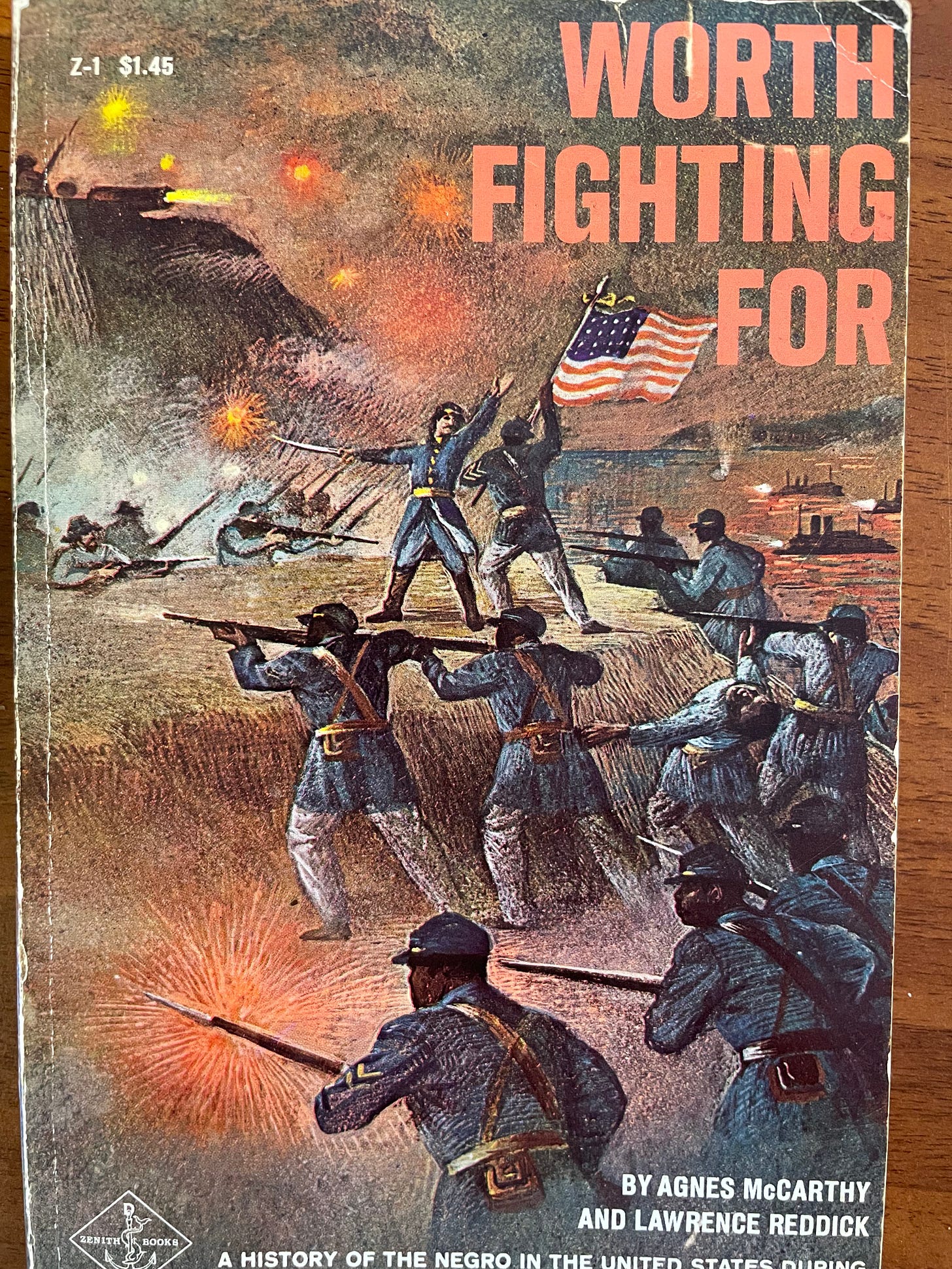
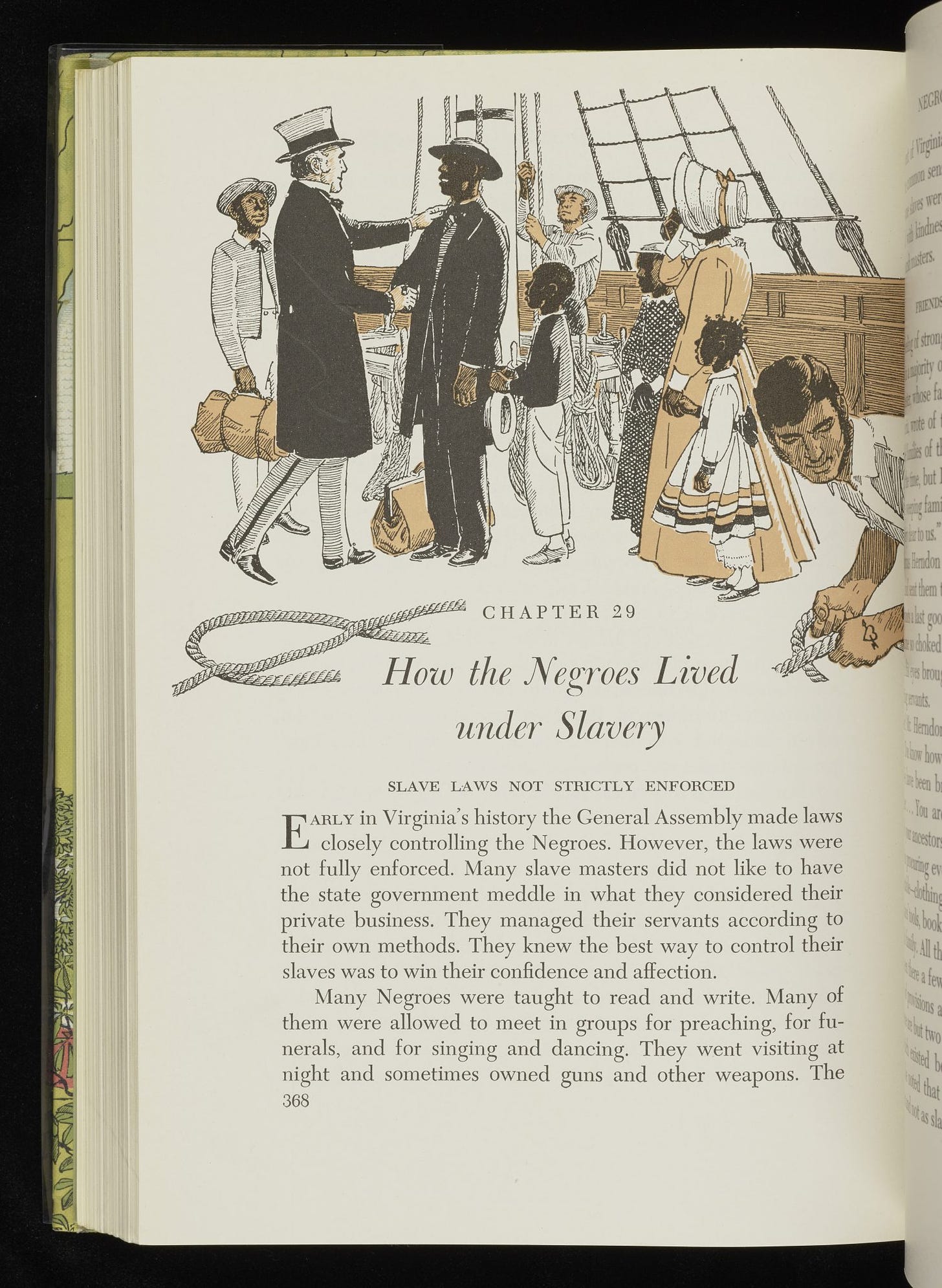
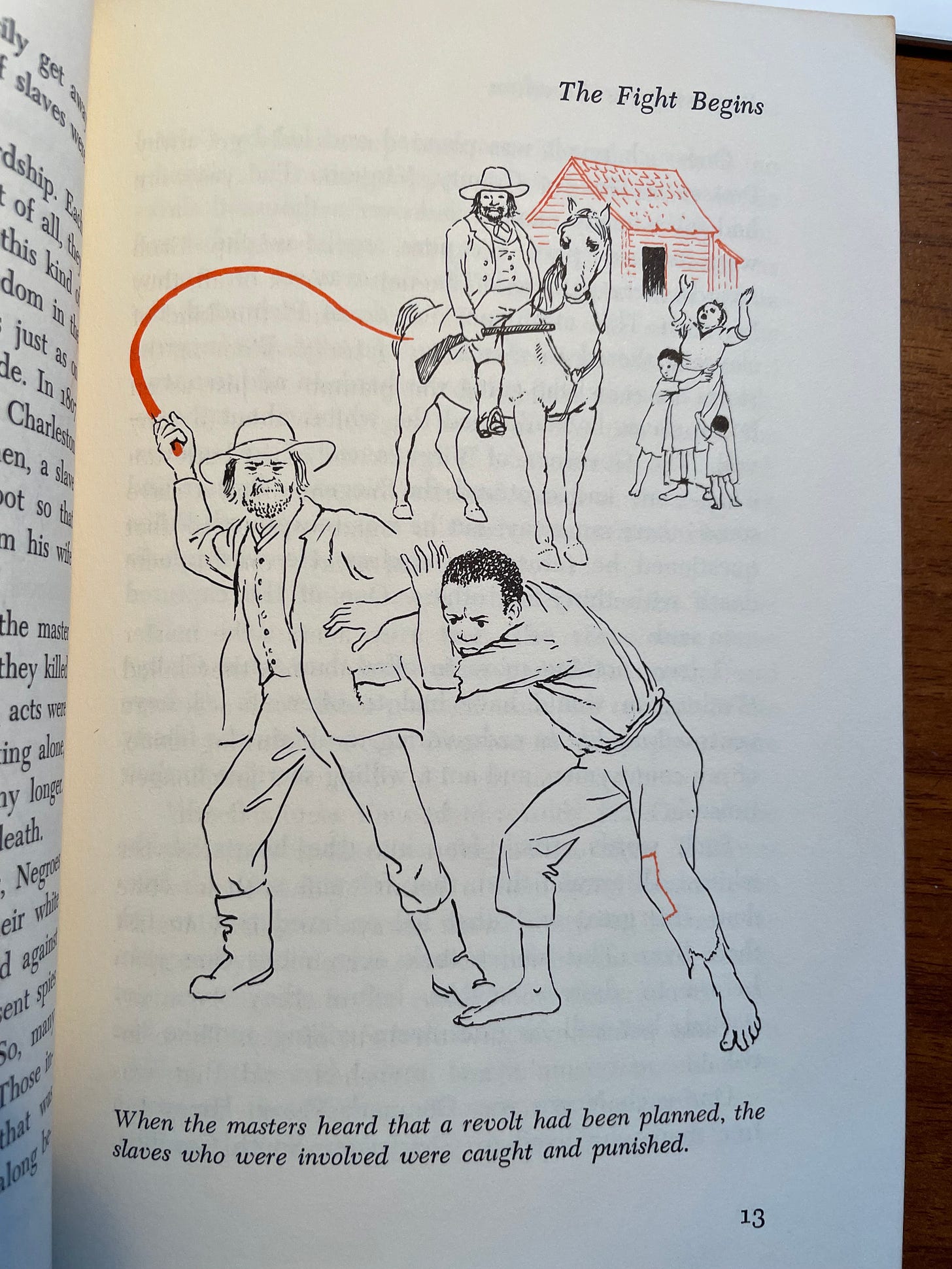
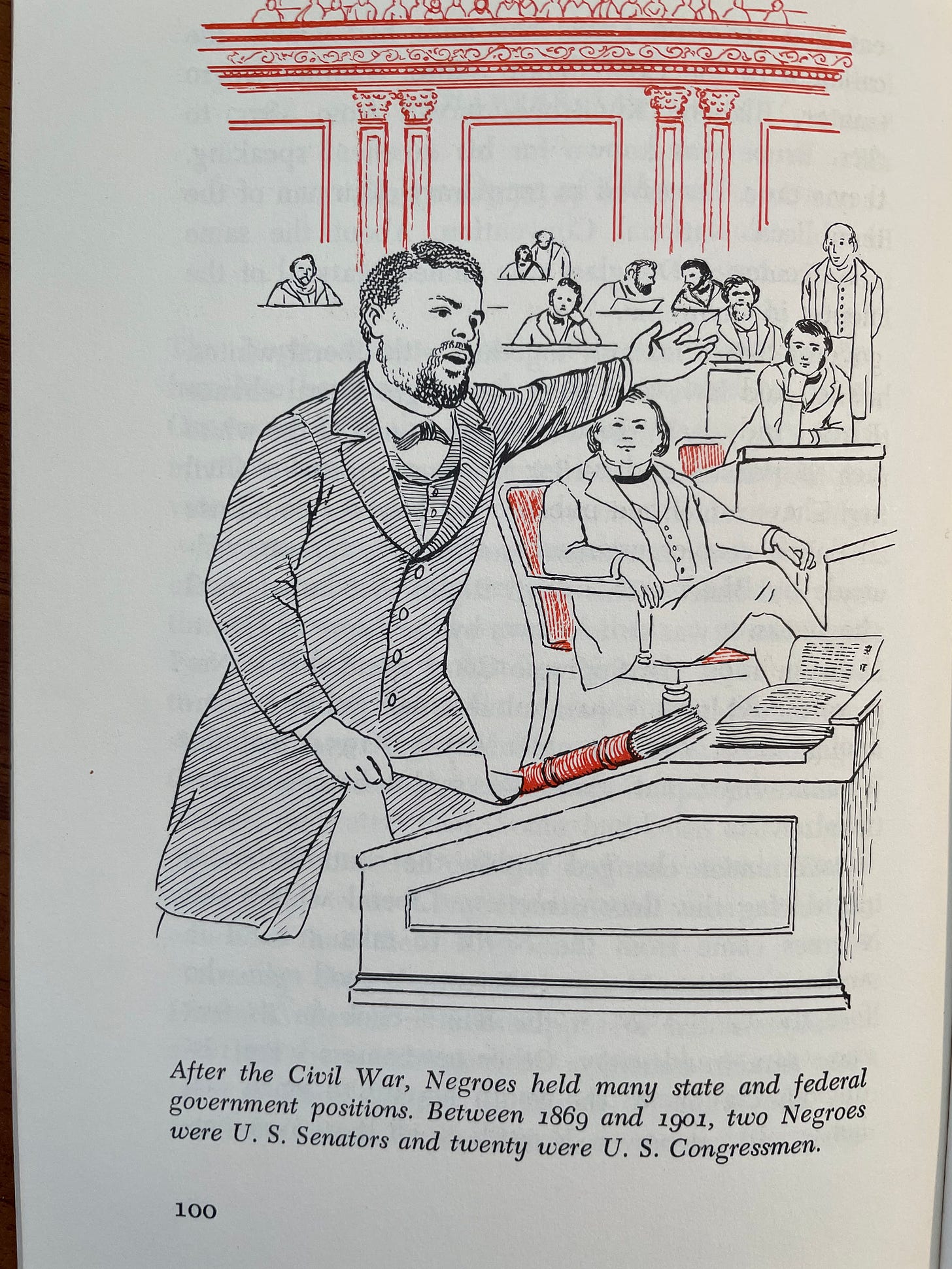
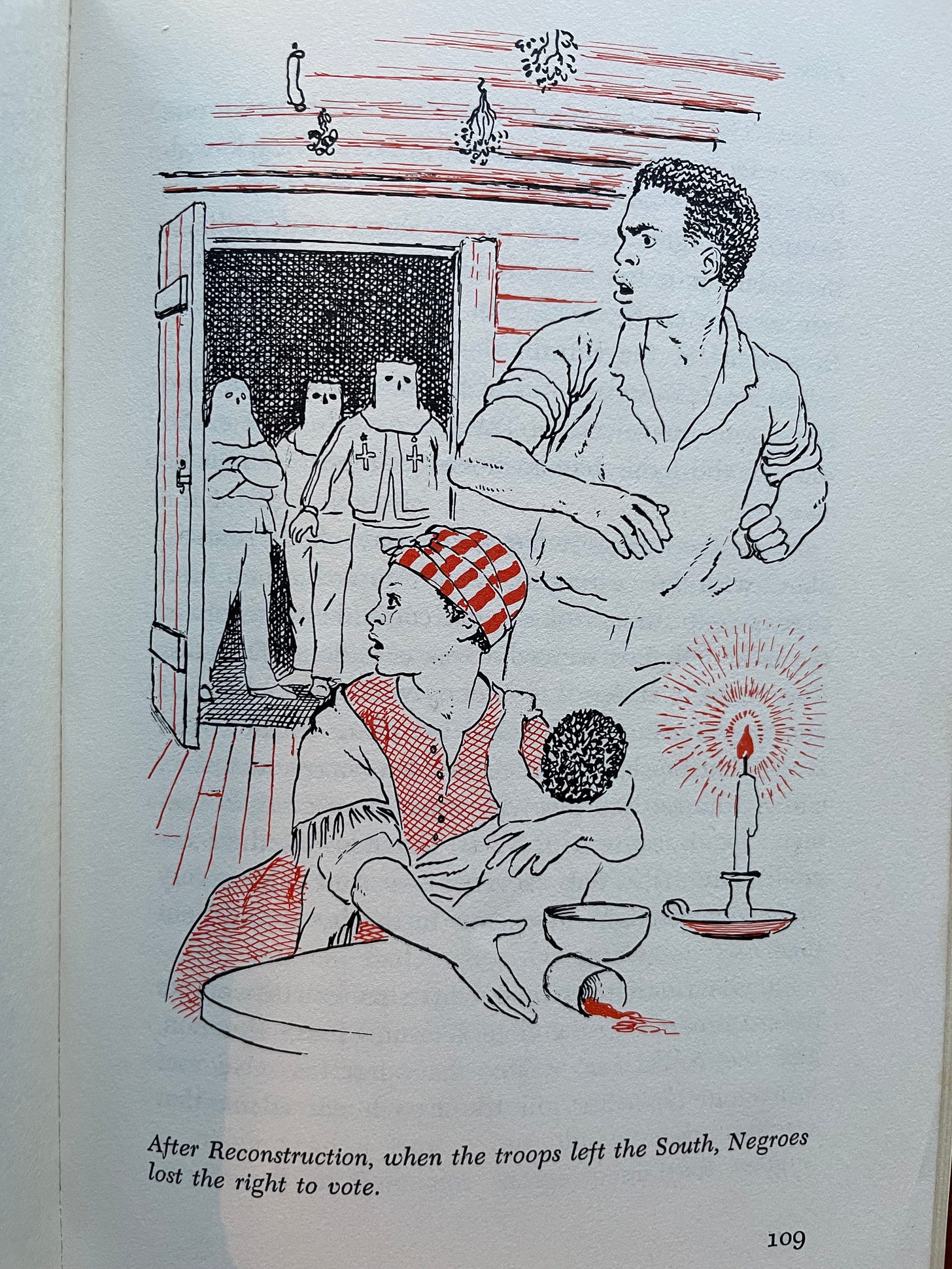
Supposedly that infamous illustration is of freed slaves about to "return" to Liberia, not the enslaved arriving. It's still horrific though.
I looked for a copy of VIRGINIA History, Government, Geography for a museum exhibit. They go for over $200 on eBay!